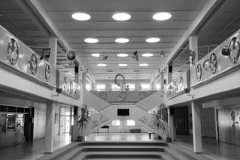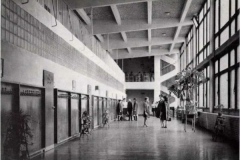School in Social Space
Text: Krisztina Somogyi
Numerous studies in environmental psychology have shown that the place where we live shapes us, influences us, and of course we shape it. We become attached to places that we like, we take care of them, we return to them for the sheer pleasure, while other, unpleasant places may even attract deviant behaviours such as vandalism. The school is a place of special significance in the set of buildings for two reasons: on the one hand, one goes to school during the privileged period of growing up, and is therefore an active component in the socialisation process. On the other hand, children spend a lot of time in these institutions, and they can develop a strong emotional attachment to these important and long-lasting places of experience, which can form the basis for making schools part of our identity. The study of individual school buildings is, of course, linked to a society’s perception of knowledge itself, the prestige of teachers, its understanding of healthy eating, the importance of movement, religion, science, etc. The functioning and appearance of specific schools, both physically and intellectually, are therefore inseparable from society as such. Moreover, school architecture is the arena for the growing generation. This raises serious questions today, because our lives are undergoing dramatic changes: the first quarter of the 21st century has seen a proliferation of pandemics, wars and ecological crises, physical space is shrinking in global terms, the digital environment has become stronger, with artificial intelligence taking on more and more functions. In this environment, the role, mode, task and purpose of teaching/learning are changing — and school architecture must necessarily change too.





